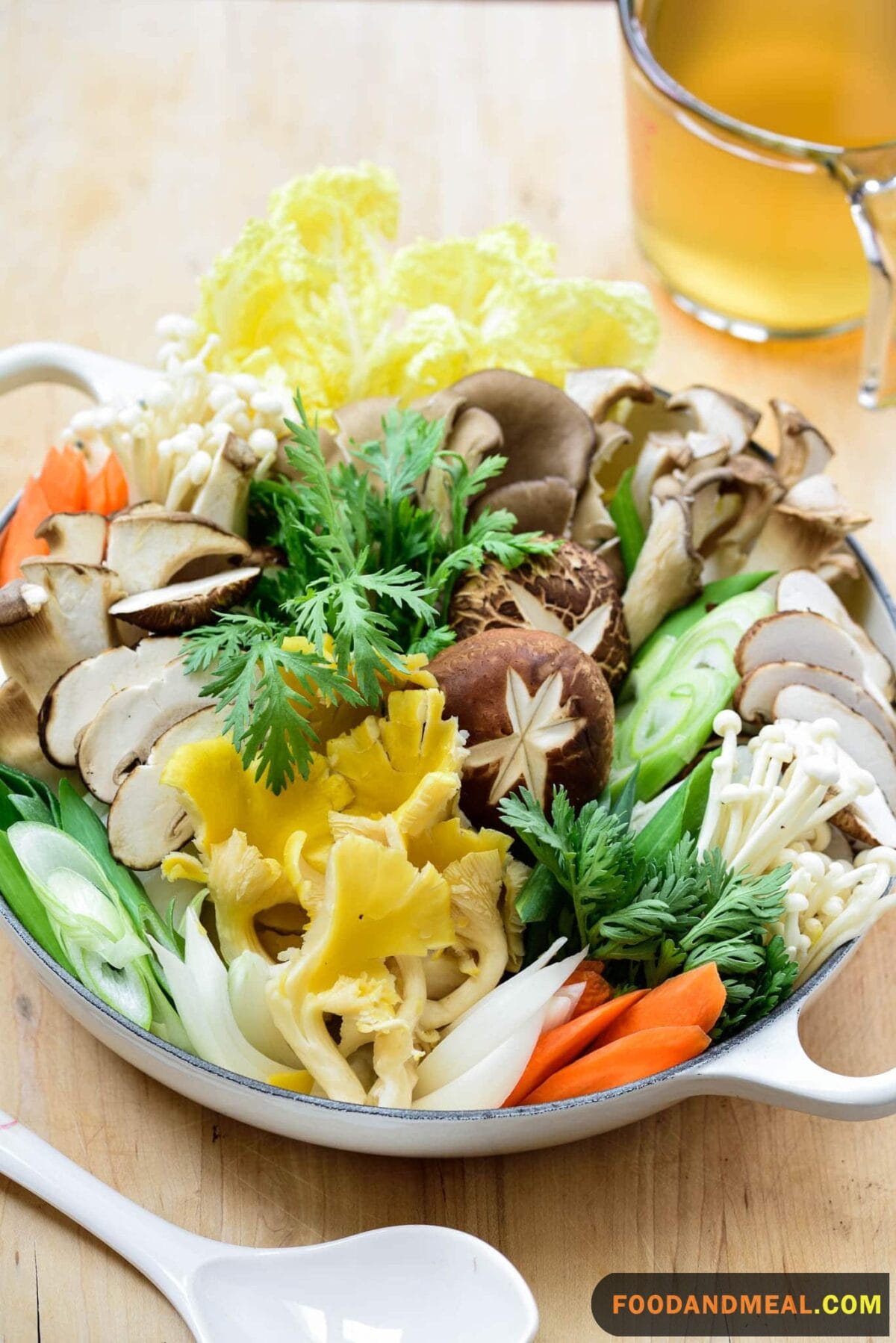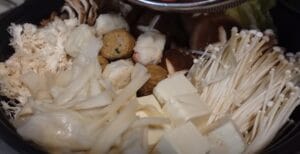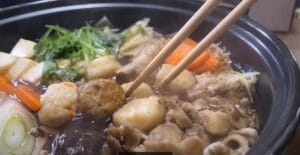As the winter chill sets in, I find myself craving warm, comforting foods that fill my home with delicious aromas. During this season, one of my favorite dishes to make is a hearty Japanese mushroom and cabbage hot pot. This soul-warming meal not only warms me from the inside out, but it also sparks fond memories of the years I lived abroad in Asia.
The first time I tried this simple yet amazing dish was at a tiny restaurant in Tokyo. There was something so homey and nostalgic about the mix of mushrooms, cabbage leaves and thin slices of tofu simmering away in an umami-rich broth. Every bite was pure comfort, from the tender vegetables to the perfectly cooked tofu. I loved watching the broth turn a beautiful amber color as the ingredients released their flavors.
Now back home, memories of that wonderful hot pot experience motivated me to try recreating it myself. While my first attempt wasn’t quite restaurant-quality, I eventually developed a recipe I was proud to share. The key was finding the right balance of dashi, mirin and soy sauce to produce a light yet intensely savory broth that allowed the ingredients to shine.
As I ladle the steaming broth into bowls and pass them around my table, I feel a profound sense of warmth and connection. There is something special about gathering loved ones together for a home-cooked meal, especially on cold winter days. I hope this simple but delicious Japanese mushroom cabbage hot pot brings your family as much joy and comfort as it does mine.
Mushroom Cabbage Hot Pot Recipe

Japanese Mushroom Cabbage Hot Pot
Ingredients
Instructions
- Prepare broth in large pot. Combine soy sauce, mirin, sake and dashi over med-high.

- Add tofu and cabbage. Bring pot to a boil. Reduce to simmer. Cover and simmer for five minutes.

- Remove cover. Add udon noodles and mushrooms. Cook for five additional minutes.

- Add the spinach. Cook for a minute more. Remove kombu and discard.

- Allow your guests to serve themselves in individual bowls.

Video
Notes
Nutrition
© Food And Meal
This website provides approximate nutrition information for convenience and as a courtesy only. Nutrition data is gathered primarily from the Spoonacular Database, whenever available, or otherwise other online calculators.
Alternative Method: Slow Cooker Japanese Mushroom Cabbage Hot Pot
Embark on crafting a delightful slow-cooked vegetable and tofu stew with these essential steps. Begin by cleaning and chopping mushrooms and cabbage, ensuring uniformity for even cooking. In a bowl, create a savory broth by combining soy sauce, mirin, sake, and dashi, adjusting to taste. Strategically layer sturdier vegetables at the slow cooker’s base, progressing to mushrooms, cabbage, and softer vegetables or tofu.
Gently pour the prepared broth over the layers, ensuring full submersion; adjust with water or broth if needed. Set the slow cooker to ‘low’ and let it work its magic for 4-5 hours, allowing each ingredient to release its flavors into a harmonious blend. As the aroma fills your space, stir gently to combine. Serve the steaming stew directly from the slow cooker, garnishing with fresh green onions or preferred herbs for a finishing touch. This slow-cooked masterpiece promises a comforting and communal dining experience.
Cooking Tips

As the recipe notes, napa cabbage has both tender leaves and tougher central ribs. It’s important to understand how to treat each component properly when stir-frying. I found it helpful to cut the leaves and ribs separately, then add the ribs first to briefly cook before introducing the more delicate leaves. This ensures everything cooks evenly without the leaves getting overly wilted.
The instructions also wisely suggest seasoning simply at the end with just soy sauce and black pepper. No need to overwhelm the lovely natural flavors of the ingredients. Letting them shine keeps things feeling light and healthy.
I really enjoyed the flexibility of this recipe as well. It would be easy to substitute or omit ingredients to accommodate different diets or preferences. For example, the bacon could be swapped for tofu or more vegetables. The versatility makes this an adaptable side dish for all kinds of meals.
The Best Ways To Serve And Enjoy Japanese Mushroom Cabbage Hot Pot

This simple yet flavorful Japanese mushroom cabbage hot pot would pair nicely with some classic sides like somen noodles, miso soup, or a refreshing wakame salad. For something hearty, yakisoba noodles or Japanese curry rice make excellent accompaniments to soak up the savory broth. Don’t forget to offer some tamagoyaki rolled omelets, negitoro sushi, or pickled cucumbers too.
I also like to set out an array of condiments for personalizing the hot pot experience. A sesame dipping sauce, spicy rayu, ponzu, or even just scallions and chili oil can all enhance the cooked ingredients. And for dessert, what could be better than matcha ice cream, daifuku mochi, or classic dorayaki pancakes with sweet red bean filling?
This soul-warming mushroom cabbage dish is all about savoring simple but beautiful flavors in the company of loved ones. I hope you’ll give this recipe a try and make some special new food memories this season.
Can I Use a Rice Cooker to Make Japanese Mushroom Cabbage Hot Pot?
Using the best rice cookers Japan offers, you can certainly prepare a delicious Japanese Mushroom Cabbage Hot Pot. This versatile kitchen appliance ensures perfectly cooked rice and can be used to simmer various ingredients simultaneously, including the mushrooms and cabbage needed for this traditional dish. Experiment with flavors to achieve the perfect taste.
FAQs of Japanese Mushroom Cabbage Hot Pot

- Can I use other types of mushrooms for this dish? Absolutely! Feel free to explore with shiitake, enoki, oyster, or even portobello mushrooms. Each variety will add its unique flavor and texture, making your hot pot even more exciting.
- Is it necessary to use sake in the broth? While sake adds a distinct flavor to the broth, if you don’t have it on hand or prefer to avoid alcohol, you can replace it with a splash of rice vinegar or simply omit it.
- How long does the hot pot last in the refrigerator? Stored in an airtight container, the hot pot can last for 2-3 days in the fridge. Just ensure it cools completely before storing.
- Can I freeze the leftovers? Yes, you can. However, some veggies might turn a bit mushy upon reheating. If you’re planning to freeze, avoid adding soft vegetables like tofu or leafy greens until you’re ready to reheat and consume.
- How can I make the broth richer? For a deeper, umami-rich flavor, consider adding a splash of soy sauce, a piece of kombu, or even some miso paste. Taste and adjust as you go!
Conclusion
I hope this post has inspired you to give Japanese mushroom cabbage hot pot a try this winter. The combination of dashi broth, mushrooms, napa cabbage, and tofu makes for a simple yet deeply savory and comforting meal that’s easy to put together.
Be sure to check Food and Meal for even more cozy recipes perfect for the cold weather months. And let me know if you have a favorite hot pot dish I should feature next! There’s nothing better than gathering loved ones around a steaming pot filled with delicious flavors and meaningful conversation.
Hi! I'm Nazia of ‘Nazia Cooks’, a self-taught baker and cook residing in Chennai. Rooted in the rich South Indian culinary landscape, my palate has expanded to embrace global flavors. I revel in crafting fusion dishes, melding traditions to birth unique tastes.








